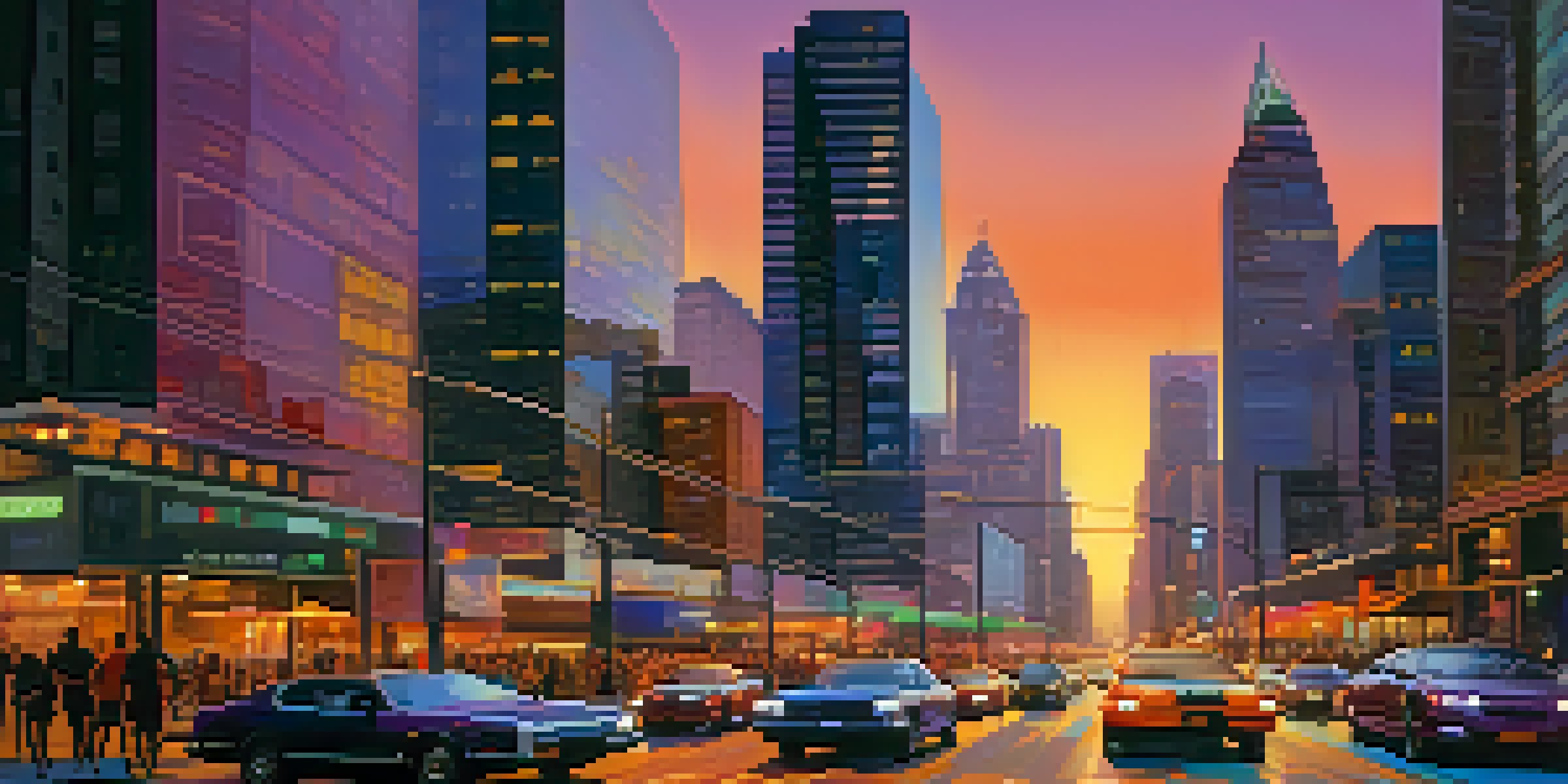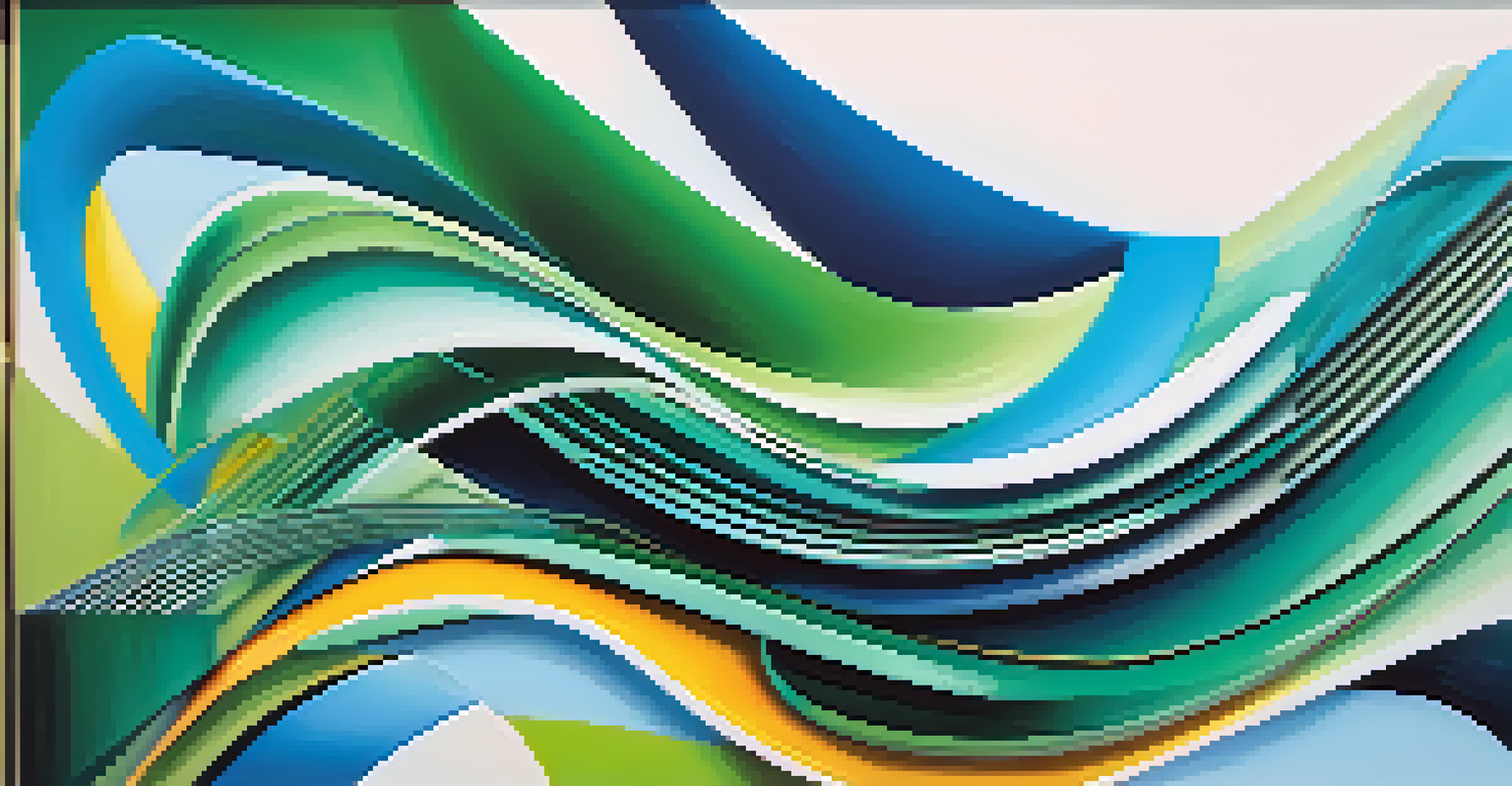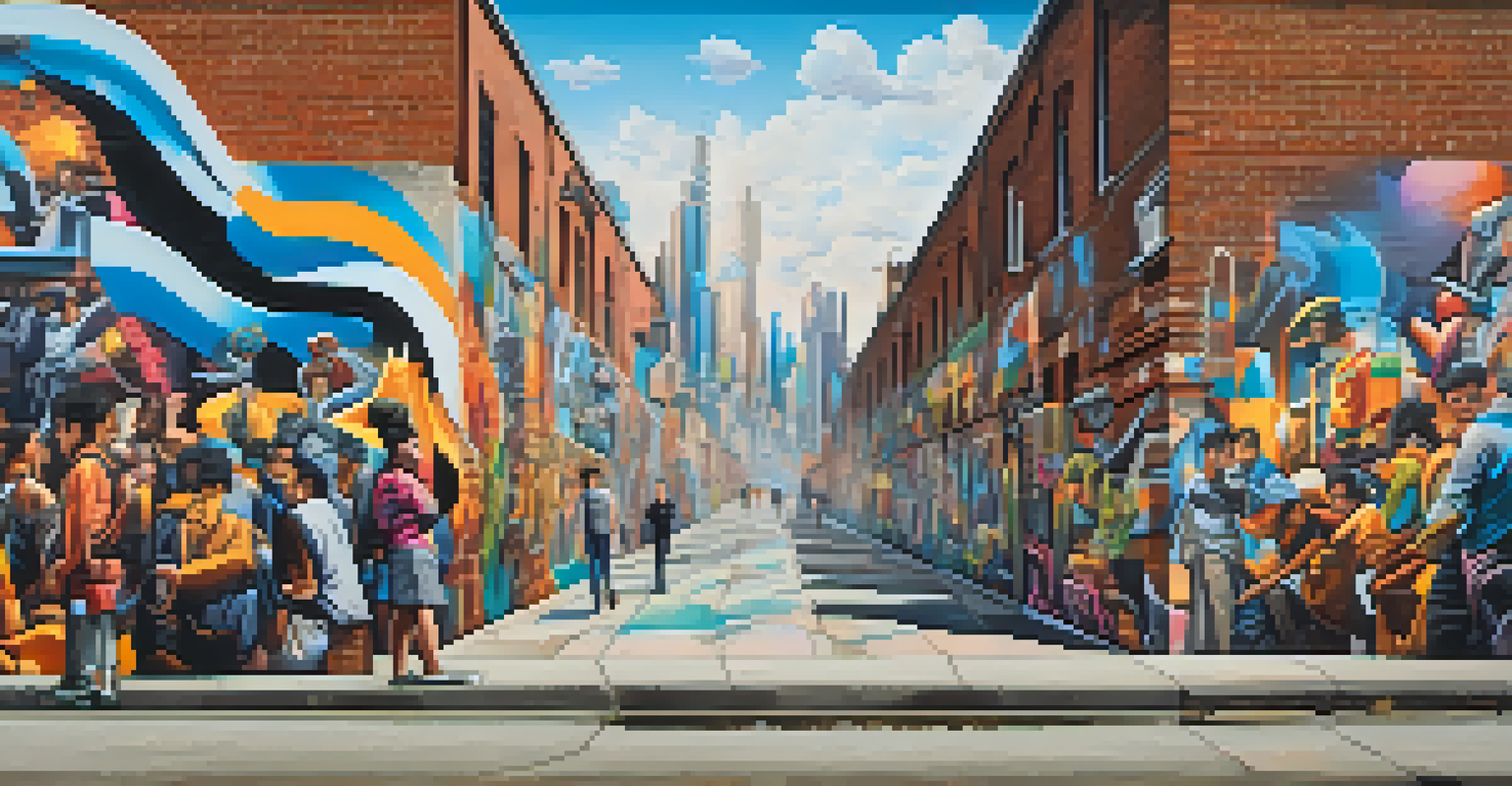Futurism’s Influence on Contemporary Art Movements

Understanding Futurism and Its Origins in Art
Futurism emerged in the early 20th century as a revolutionary art movement that celebrated modernity, technology, and speed. It was founded by Italian poet Filippo Tommaso Marinetti, who published the Futurist Manifesto in 1909, calling for a break from the past and an embrace of the future. Artists like Umberto Boccioni and Giacomo Balla sought to capture dynamic movement and the energy of modern life in their works.
The only way to deal with the future is to function efficiently in the now.
At its core, Futurism was about rejecting traditional artistic conventions and instead focusing on the vibrancy of contemporary experiences. This approach resonated with the rapid industrialization and urbanization of the time, reflecting the excitement and chaos of the new century. The movement's emphasis on technology and progress has continued to influence various art forms even today.
Futurism's bold ideas laid the groundwork for several contemporary art movements. By prioritizing innovation and a forward-thinking mindset, it inspired artists to explore new techniques and themes that challenged established norms, paving the way for future explorations in art.
Key Themes of Futurism That Resonate Today
One of the central themes of Futurism is the celebration of technology and speed, which remains relevant in contemporary art. Artists today continue to explore how technological advancements affect our lives and perceptions, often using new media to express their ideas. This ongoing fascination with technology reflects the same spirit that fueled the Futurists over a century ago.

Another significant theme is the idea of movement and dynamism. Futurist artworks often depicted figures in motion, capturing the energy and excitement of modern life. Contemporary artists still draw inspiration from this concept, using techniques like abstraction and kinetic art to evoke a sense of movement and fluidity in their works.
Futurism's Legacy in Contemporary Art
Futurism's themes of technology and urban life continue to inspire and influence modern artists across various disciplines.
Lastly, Futurism's focus on the urban experience resonates in today's art world. As cities continue to evolve and expand, artists reflect on the complexities of urban life, addressing issues such as isolation, community, and the interplay between nature and the built environment. This thematic continuity showcases how the essence of Futurism continues to inspire new generations of artists.
Futurism's Role in the Development of Abstract Art
Futurism played a crucial role in paving the way for abstract art movements that followed. The movement's emphasis on breaking away from realism and exploring the essence of subjects influenced artists like Wassily Kandinsky and Kazimir Malevich. These artists pushed the boundaries of representation, focusing on color, form, and emotion rather than realistic depictions.
Art is not what you see, but what you make others see.
By prioritizing abstraction, Futurism encouraged artists to experiment with non-representational forms. This shift allowed for a broader exploration of artistic expression, ultimately leading to the emergence of various abstract movements throughout the 20th century. As artists began to view art as a means of conveying ideas rather than simply depicting the physical world, the legacy of Futurism became increasingly apparent.
Today, the influence of Futurism can still be seen in contemporary abstract art. Many modern artists draw on the Futurist ethos of innovation and experimentation, using new materials and techniques to create works that challenge viewers to think differently about art and its possibilities.
Futurism's Impact on Performance Art and Theatre
Futurism's influence extends beyond visual arts, significantly impacting performance art and theatre. Futurist artists sought to create immersive experiences that combined various art forms, including visual art, music, and literature. This interdisciplinary approach has shaped the development of contemporary performance art, where boundaries between different mediums are often blurred.
The Futurists were known for their provocative live performances, which aimed to engage and challenge audiences. Their theatrical works often featured dynamic movements, bold visuals, and experimental sounds, creating an all-encompassing sensory experience. This commitment to pushing boundaries and engaging viewers continues to inspire modern performance artists and theatrical productions.
Impact on Performance and Design
The movement's innovative spirit has shaped performance art, theatre, and graphic design, blending different mediums and creating dynamic experiences.
Today, performance art often reflects the same ethos of innovation and exploration that characterized Futurist performances. Artists frequently incorporate technology, audience participation, and multimedia elements, creating dynamic and interactive experiences that echo the Futurist spirit of the early 20th century.
Futurism's Influence on Graphic Design and Advertising
Futurism's celebration of technology and modernity has also left a significant mark on graphic design and advertising. The movement's bold aesthetics, characterized by dynamic lines and vibrant colors, can be seen in various branding and advertising campaigns today. Designers often draw on this Futurist influence to create eye-catching visuals that convey a sense of speed and innovation.
The Futurists believed that art should be integrated into everyday life, and this idea has been embraced by contemporary designers. As a result, graphic design often incorporates elements of Futurism to create engaging visuals that resonate with modern audiences. This fusion of art and commerce reflects the ongoing relevance of Futurist principles in the digital age.
Moreover, the emphasis on movement and dynamism in Futurist art can be seen in motion graphics and digital design. As technology continues to evolve, designers are inspired by the Futurist legacy to create captivating visuals that draw viewers in and evoke a sense of excitement and energy, further solidifying the movement's lasting impact on contemporary design.
The Connection Between Futurism and Street Art
Street art, with its roots in urban culture, has a surprising connection to Futurism's emphasis on the modern city. Many street artists draw inspiration from the vibrant energy of urban environments, echoing the Futurist celebration of modernity and technology. This shared appreciation for the urban experience allows street art to act as a contemporary continuation of the Futurist ethos.
Futurism's focus on public space and accessibility resonates with the nature of street art, which often seeks to engage communities and provoke thought in everyday settings. Just as Futurist artists aimed to break down barriers between art and the public, street artists work to democratize art, making it accessible to all. This alignment of values establishes a clear link between the two movements.
Street Art's Connection to Futurism
Street art echoes Futurism's celebration of urban environments, democratizing art and emphasizing bold visuals and accessibility.
Additionally, the bold colors and dynamic forms characteristic of Futurist art can be seen in many street art murals today. Artists often use vibrant visuals and kinetic styles to capture the attention of passersby, much like their Futurist predecessors. This connection between street art and Futurism highlights the enduring legacy of the movement in contemporary artistic expressions.
Reimagining Futurism in Contemporary Art Exhibitions
Contemporary art exhibitions often reexamine and reinterpret Futurism, providing fresh perspectives on the movement's impact. Curators frequently highlight how Futurism's themes of technology, speed, and urban life continue to resonate with contemporary artists. By showcasing works that draw inspiration from Futurism, these exhibitions bridge the gap between past and present.
Artists today are not only inspired by Futurism's aesthetics but also its ideas and philosophies. Many contemporary creators explore the implications of technology on society, echoing the Futurist focus on modernity and progress. This exploration leads to thought-provoking discussions about the role of art in reflecting and shaping our understanding of the world.

Through exhibitions that celebrate Futurism, audiences can engage with the movement's legacy in a meaningful way. By connecting historical works with contemporary interpretations, art institutions foster a dialogue that encourages viewers to consider the lasting influence of Futurism on today's artistic landscape.